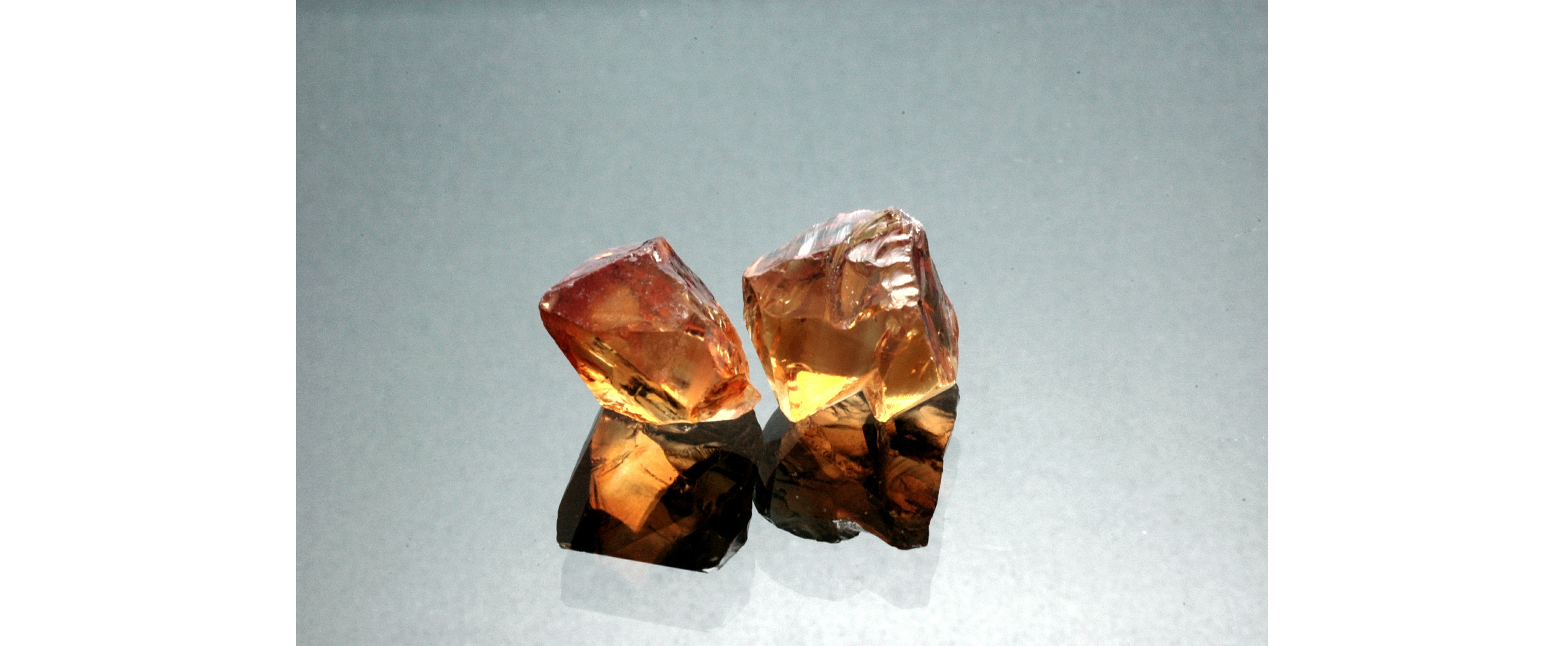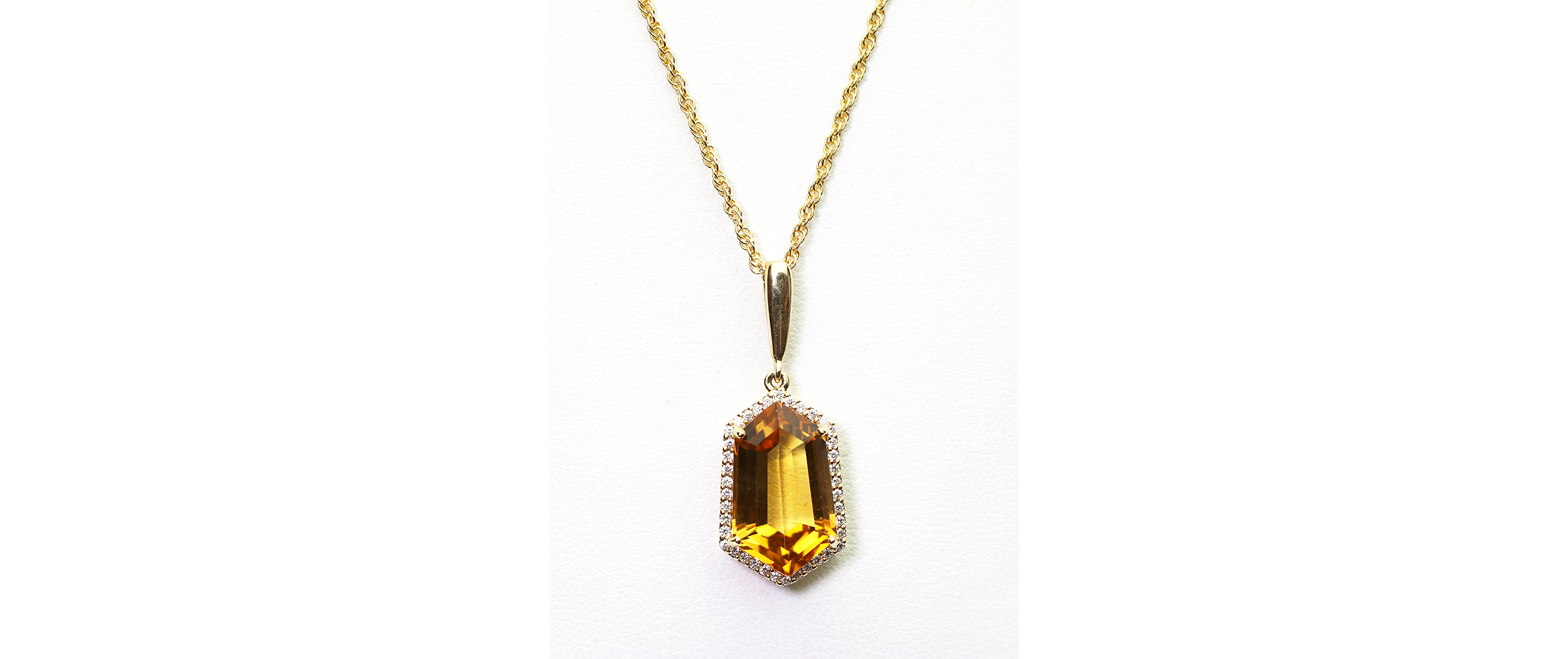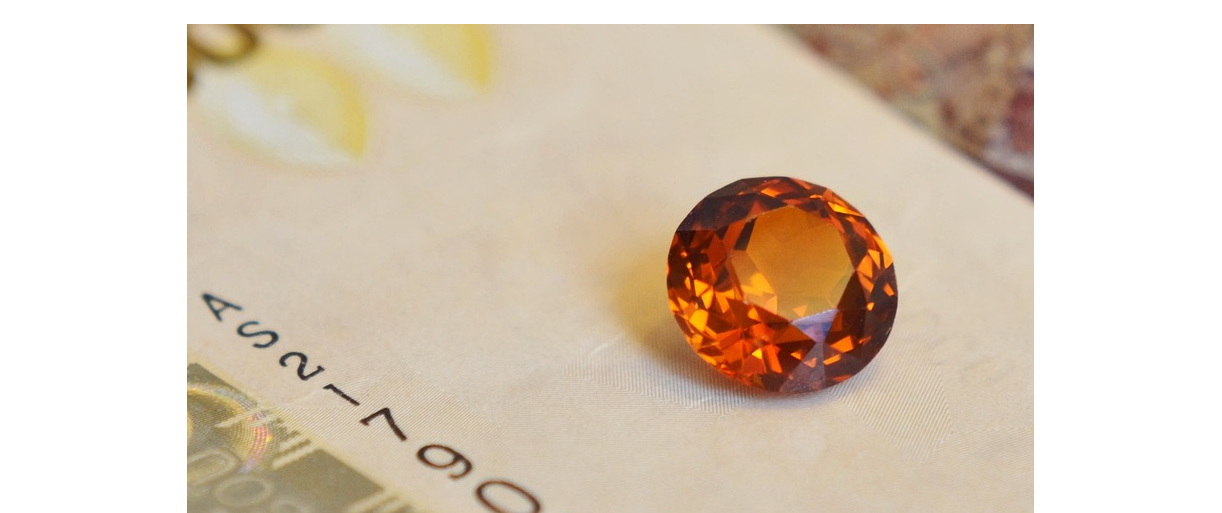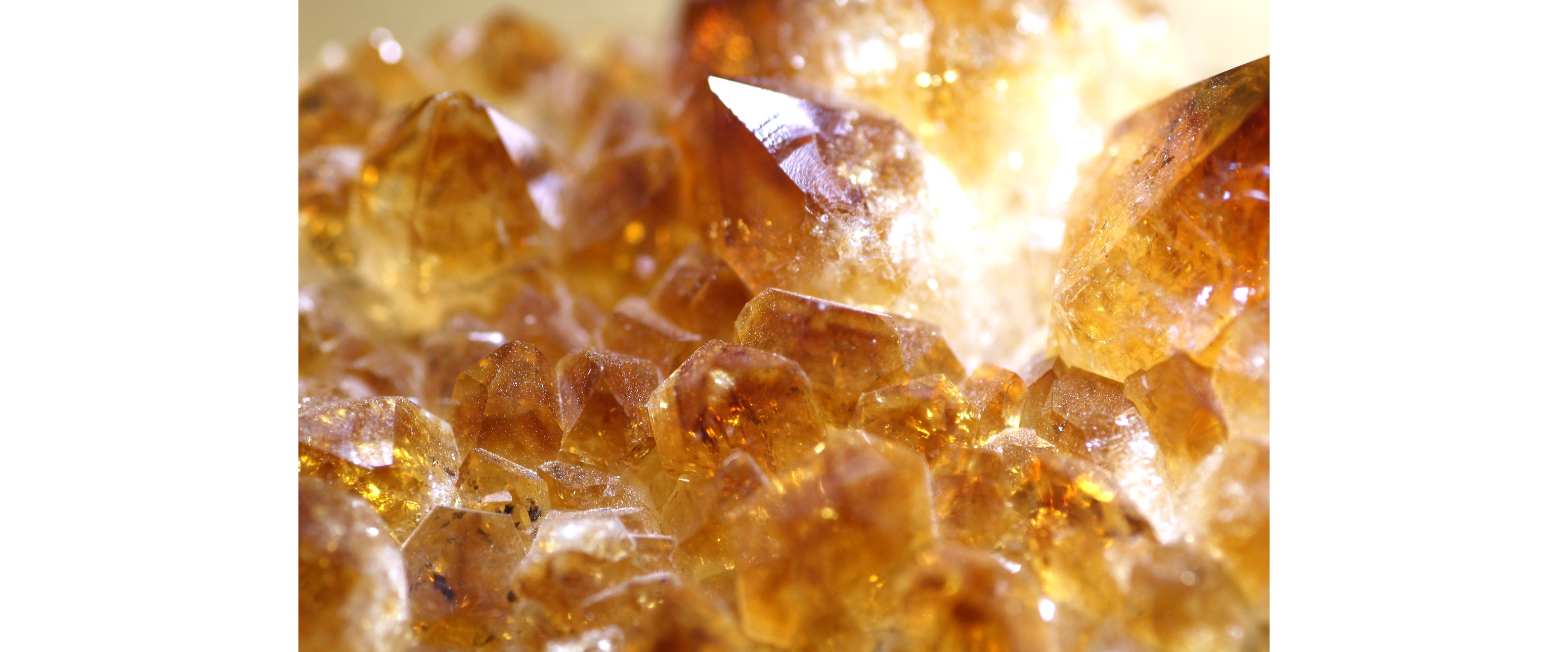C




CITRINE
Name: Citrine comes from the French word “citron” meaning “lemon.” In 1385, the term “citrine” was first used in reference to yellow gemstones.Color: Citrine is a variety of Quartz. It gets its color from iron (Fe3+). Citrine has a color range from pale yellow to brownish orange, orange-yellow to brownish/greenish, greenish-yellow. Since ancient times it has often been mistaken for topaz. Today, the most sought-after color of Citrine is a deeply saturated reddish-orange, which can include the Madeira Citrine (gold-orange to reddish-brown) and the Fire Citrine (deep red-orange). It is rare to find in nature. Most citrine on the market is a result of heat-treated amethyst or smoky quartz. In the case of amethyst heat treatment changes the iron from Fe4+ to Fe3+ turning the purple into pale yellow to brownish-orange to reddish-orange color.
Moh’s Hardness: 7.
Location Found: Brazil, Bolivia, Spain, Madagascar, Mexico, Uruguay, Russia, France, Scotland, and the United States of America. Fire Citrine is a trade name for heat treated citrine that comes from the Linha Estefania Mine in Brazil. Madeira Citrine is a trade name for a specific color of heat treated amethyst that comes from Brazilian state Rio Grande do Sul, Madagascar, Uruguay, and Zambia.
Birthstone: November (1912, National Association of Jeweler’s).
Wedding Anniversary: 13th.
Zodiac Signs: Scorpio, Sagittarius, Leo, and Cancer.
Chakra Association: Solar Plexus.
Historical Associations: calming; soothing tempers; increasing intelligence; joy; happiness; wealth (accumulating); money; success; attracting love; attracting prosperity; protection from heartache; protection from evil thoughts; Sun.
Historically Used to Treat: snake venom; poisons.
Care: High heat can cause color loss. Prolonged exposure to intense light can cause fading. Sudden or extreme temperature change can cause fracturing. Soluble in hydrofluoric acid and ammonium fluoride; very slightly soluble in alkalis. Steam cleaning is not recommended. Ultrasonic cleaning is usually safe. Warm, mild soapy water is safe. Dry with a soft cloth so no spots are left behind.
Imitations: Glass; Plastic; Synthetic hydrothermal quartz; Synthetic sapphire; Synthetic Spinel.
CHAROITE
Name: named after the Chara River in the Sakha Republic (Yakutia), Siberia, Russia, near where it was discovered. The name is also often linked to the Russian word “chary,” meaning “charms” or “enchantment”.
AKA: Stone of Transformation; Soul Stone.
Description: A rock composed of charoite, mixed with other minerals such as aegirine (black), tinaksite (yellowish-brown), and microcline feldspar (white). It is a variegated purple, lavender and white patterns and sometimes inclusion crystals of orange, gray and/or black. It has a vitreous (glassy) to pearly luster and can sometimes exhibit a shimmering effect called chatoyancy.
Composition: a complex silicate mineral (K(Ca,Na)2Si4O10(OH,F)⋅H2O).
Color: Distinctive shades of lilac, lavender, and rich violet-purple, intermixed with swirling, fibrous patterns of white, black, gray, and occasionally yellowish-brown or greenish spots. It has a vitreous (glassy) to pearly luster and can sometimes exhibit a shimmering effect called chatoyancy.
Treatments: Natural is generally untreated.
Moh’s Hardness: 5 to 6.
Location Found: Russia (Siberia, Charo River area); Sakha Republic (Yakutia).
Birthstone: December 21st to January 19th.
Wedding Anniversaries: N/A
Zodiac Signs: Capricorn; Sagittarius; Scorpio; Virgo.
Chakra Associations: all; Crown, Third Eye, Heart, Solar Plexus, Root, Soul Star, Earthstar.
Historical Associations: dispel fear of the unknown; cleansing; uplifting; radiant; aura cleansing; clear and purify energetic/etheric body of external vibrations; opening heart for deeper connection; rejuvenating; loosen attachment; meditation; revealing of path of service; purging inner negativity; protection; healing; dispelling negativity; releasing disharmonies; protection from psychic attack; transmutation of old patterns of imbalance; healing; access past life memories; release work; deeper spiritual insights; unconditional love; synchronicities in life increased; pathless path; latent inner knowledge; remove hindrances; shadow work; energetic boundaries; courage; transformation; finding beauty in unexpected places; deep emotional spiritual healing; dissolve fear and negativity; intuition enhanced; psychic abilities enhanced; cleanse aura; integrate spiritual knowledge into daily life; emotional healing; spiritual healing; integrate spiritual knowledge.
Historically Used to Treat: detoxification; liver; pancreas; nervous system; insomnia; nightmares; sleep disturbances; headaches; cramps; high blood pressure; general health.
Care: Prolonged exposure to direct sunlight may cause color fading. Avoid ultrasonic and steam cleaners. Avoid harsh chemicals. Clean with warm, soapy water and a soft cloth.
Imitations: Plastic; Resin; Dyed massive beryl; low-grade purple fluorite.
Synthetics: N/A.
